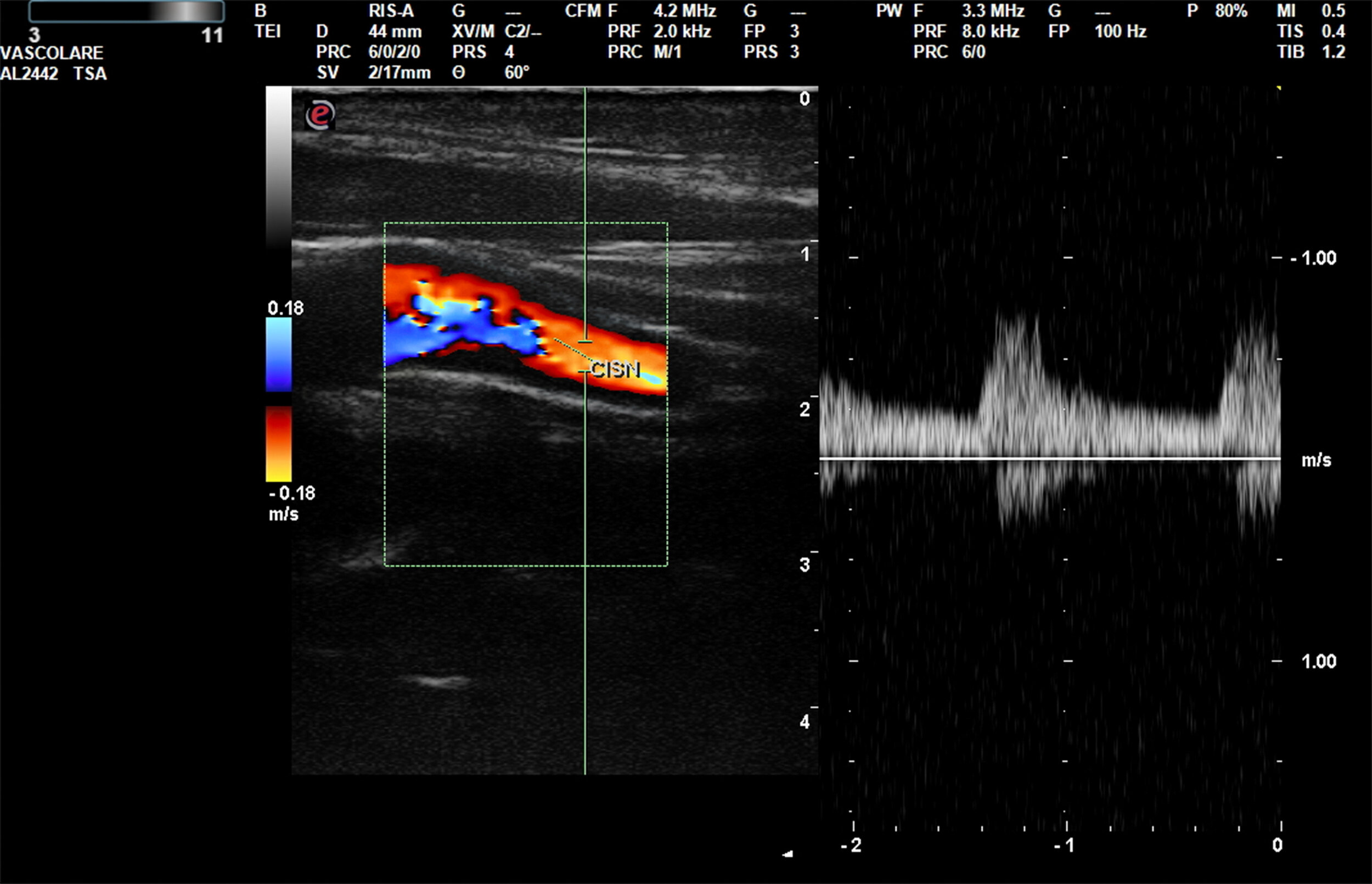
Vascular - Ultrasound : Patient Guide.
Vascular Ultrasound Examination (VUE)
When showing stroke-related symptoms, your doctor will appoint you for a Vascular Ultrasound Exam. Ultrasound is used to observe certain veins and arteries that have potential clots, narrowing or blockages. No special preparation is needed but it is suggested to wear an outfit that allows easy access to the affected areas. These tests are all noninvasive and are done commonly in the arms, neck, or legs. A technician will begin by placing a gel on your skin above the region being observed. Next, the technician will lead an ultrasound probe (transducer) above the gelled areas to observe beneath the skin in real-time. Appointments will last between 30 - 60 minutes depending on the examination.
Arterial Evaluation
When performing an Arterial Evaluation, a technician will measure blood circulation using blood pressure cuffs. A 4 hour fasting period (not including water and medication), is required before the exam. Patients that are diabetic are excused from this fasting period. Appointments will last between 30 - 60 minutes depending on the examination.
Carotid Duplex Examination
What is this examination?
This ultrasound examination is done above the carotid arteries located on both sides of the neck. The carotid arteries direct blood in and out of the brain so a Carotid Duplex Examination is performed to reveal possible blockages or narrowing of the arteries that could lead to a stroke.
Possible symptoms caused by a blocked or narrowed artery include:
Aphasia
Dizziness
Carotid Bruit
Transient blindness in one eye
Fainting
Feeling weak or numb on one side of your body
What is involved ?
Wear an outfit that will allow easier access to the neck such as a loose t-shirt. During the exam, the Sonographer will have you lay down on an examination table and the lights will be off to ensure a better screening process. Screening results should be delivered to your doctor in 48 hours. Expect the examination to last approximately 30 minutes.
ARTERIAL EVALUATION
What is this examination?
An Arterial evaluation is performed on the legs to detect signs of peripheral vascular disease (PVD) and blockages inside the arteries.
Possible symptoms caused by Peripheral Vascular Disease include:
Loss of feeling and/or a tingling sensation below the ankles (in the feet or toes)
Loss of coloration in the feet when raised/heightened/elevated/lifted
Blue or Red discoloration in the feet
Significant decrease in temperature below the hips/ in legs or feet
What is involved ?
An arterial evaluation is noninvasive and may include an exercise portion if suggested by your doctor. The procedure will begin by administering blood pressure cuffs around the ankles, calves, and thighs. Examining the blood pressure in these areas will help detect narrowing or blockages in the arteries. If exercise is prescribed you will be asked to pace at a regular speed on a treadmill for 5 minutes.
VENOUS DOPPLER EVALUATION
What is this Examination ?
When a Venous Doppler Evaluation is performed it is likely being used to help identify potential blood clots, Deep Vein Thrombosis, or possibly measuring a vein reserved for bypass surgery.
Possible symptoms experienced from Deep Vein Thrombosis include:
Swelling in the affected limb(s)
Pain in the leg
Sudden shortness of breath
Chest pain/discomfort increased by coughing or deep breathing
VENOUS REFLUX EXAMINATION
What is this Examination ?
Venous Reflux Examinations are performed to analyze the valves in the veins of the legs.
Possible symptoms experienced from Venous Valvular Deficiency include:
Ulcers that are not recovering
Discoloration and severe pain around the lower levels of the leg (ankles)
What is involved ?
This Exam is noninvasive and will require you to cycle your foot up and down for a short period to direct blood to the heart. Using a sensor attached to the leg, a technician will be able to determine if your valves are functioning properly by analyzing the time needed for the blood to settle back at the ankle. If an abnormality is detected in the valves there is a possibility of Venous Valvular Deficiency.
